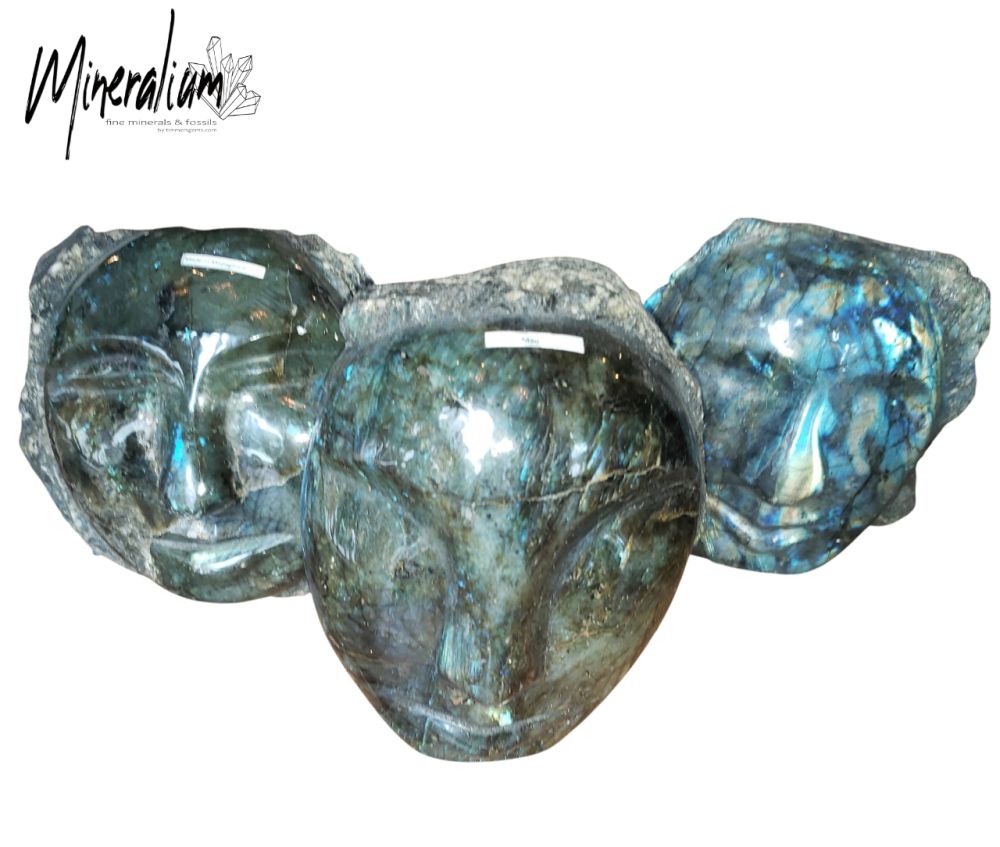We use cookies to make your experience better.
TimmersGems has a new website, existing customers also need to register again.
Labradorite "angel faces” (2-6 kilos each), hand engraved, with a lot of fire.
Beautifully engraved angel heads, very popular, from Ampanihy (Tulear), Madagascar.
Availability:
In stock
SKU
122316
Labradorite "angel faces” (2-6 kilos each), hand engraved, with a lot of fire. is available to buy in increments of 6
The mineral labradorite is a calcium-sodium-aluminum tectosilicate with the chemical formula (Ca,Na)(Si,Al)4O8. It belongs to the feldspars. The colourless, white, grey or light green labradorite has a glassy lustre, a white stripe colour, a perfect cleavage according to crystal plane [001] and a good one according to [010]. The average density is 2.69 and the hardness is 7. The crystal system is triclinic and the mineral is neither radioactive nor magnetic. The characteristic play of colours, called labradorisation, is caused by the refraction of light on microscopically small crystals of various dark minerals, which lie on the cleavage planes. Labradorite usually occurs shapeless or granular; the mineral rarely or never forms crystals. Of the precious and ornamental stones that show such a play of colours, labradorite is undoubtedly the best known. When the stone is judiciously cut, the play of colours comes into its own even better. But the beautiful labradorisation can often be seen on the rough pieces as well. There are few minerals that change colour as much as labradorite. The name of the mineral labradorite is derived from the Labrador Peninsula in Canada, where it was first described. The stone was discovered in 1780 on the east coast of the Labrador Peninsula by a priest and named after the island. He found a large number of boulders with a striking grey colour that changed colour to dark blue and green nuances when turned. This discovery aroused great interest among scientists at the time and it was determined that this was a soda lime feldspar or plagioclase. Labradorite is a common feldspar in metamorphic and igneous rocks such as pegmatite. It is part of the plagioclase series (albite-anorthite). The type locality of labradorite is on the Canadian Labrador Peninsula. Deposits are also found in Australia, Madagascar, Mexico, Russia, the United States and Finland.
| Dimensions | Divers |
|---|---|
| Country of Manufacture | Madagascar |












